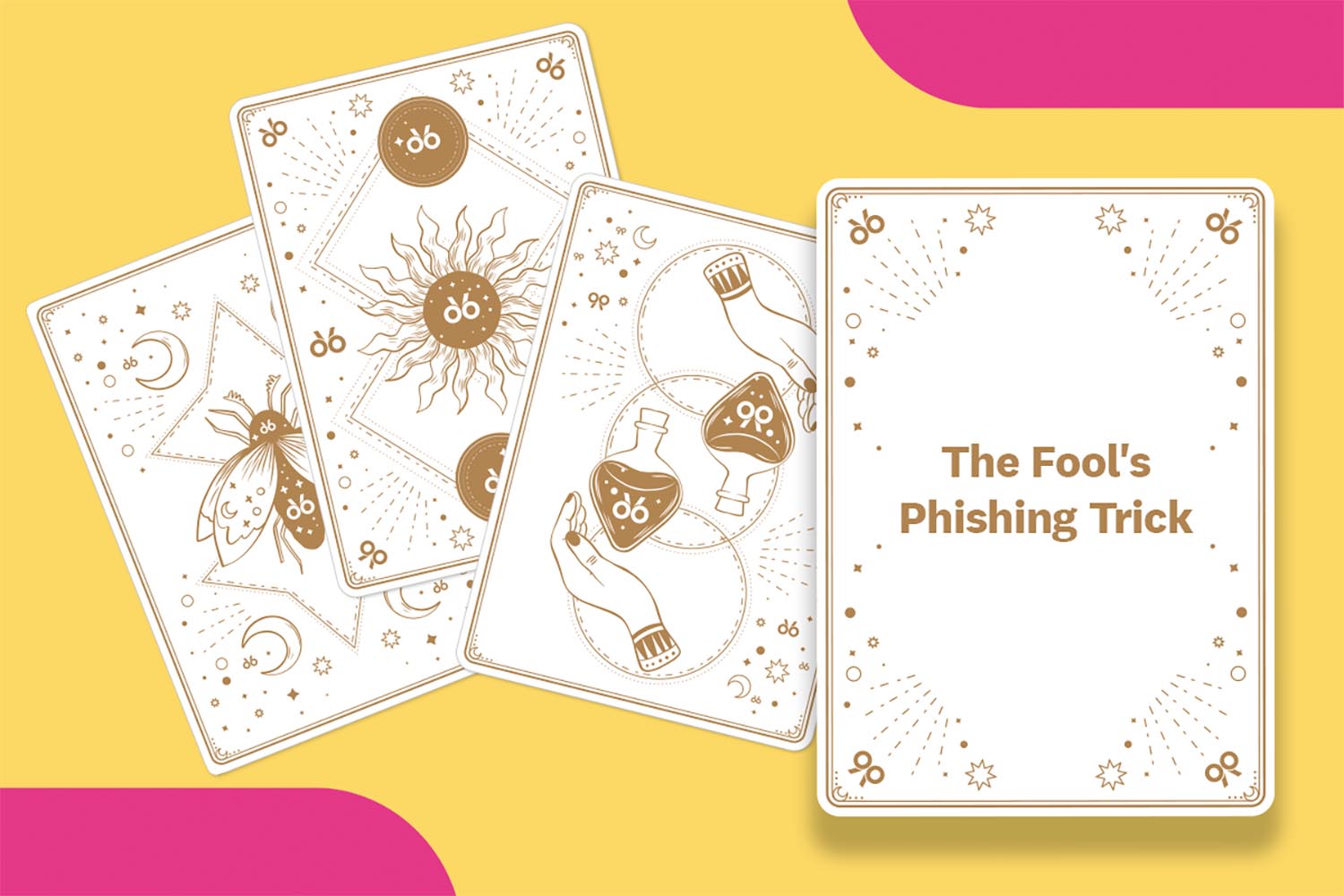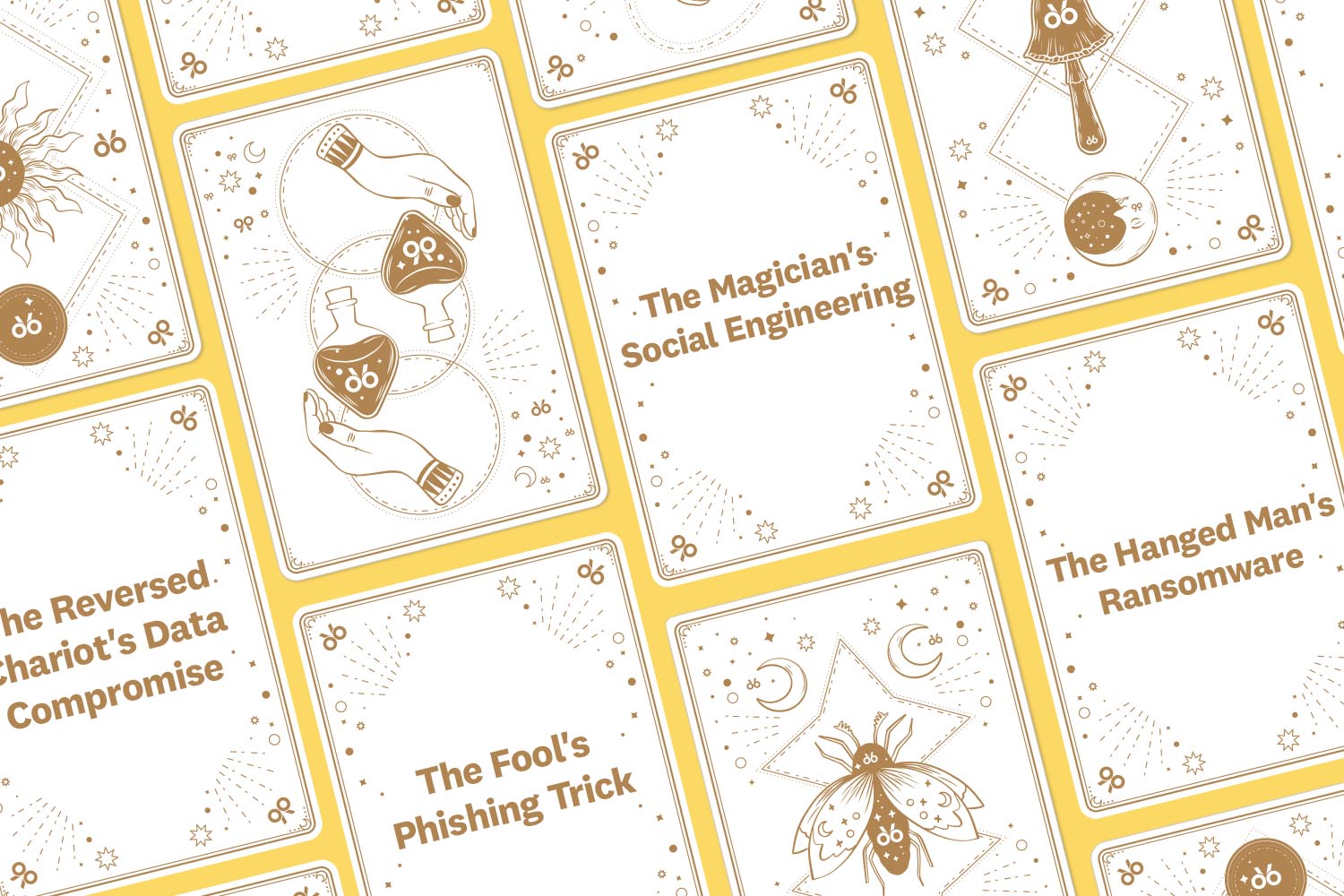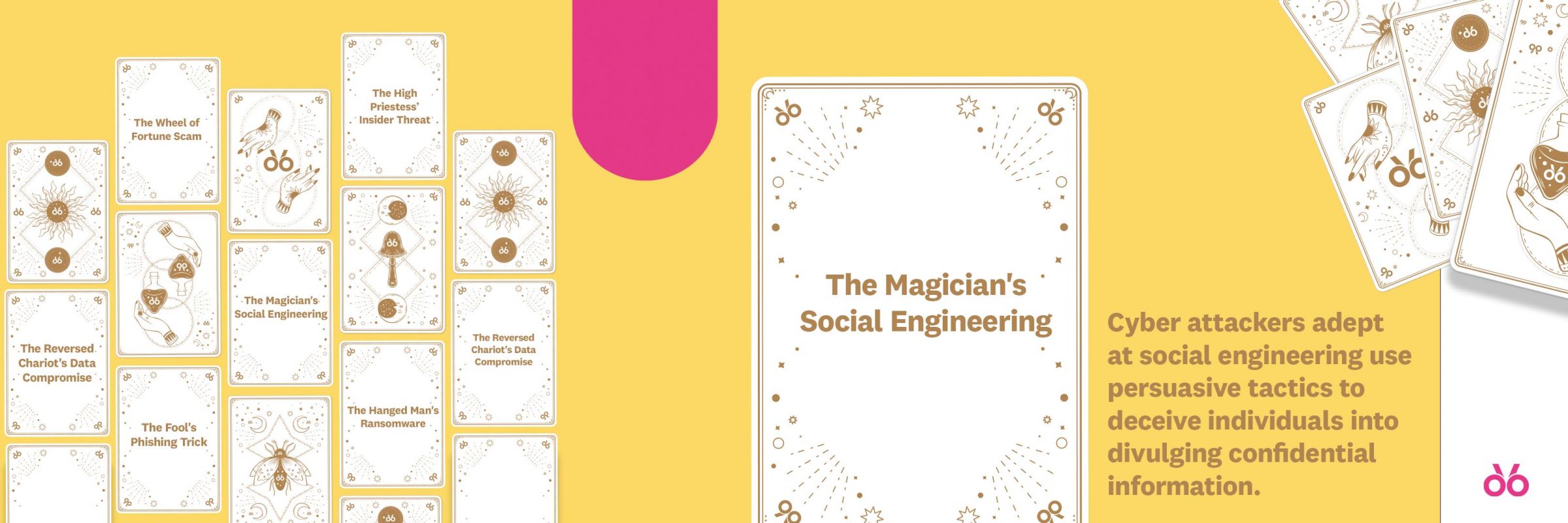Acybersecuritytarotreading
Inspired by tarot card archetypes, we'll explore 7 common cyber threats organisations are facing. Each carries a unique story and approach to avoiding it.
In the world of cybersecurity, threats often lurk in the shadows, ready to catch us off guard. To shed light on some of these malicious activities, we'll explore seven common cyber threats organisations are facing, inspired by tarot card archetypes. Each one carries a unique story and approach to avoiding it.

The Fool's Phishing Trick
The Fool card symbolises naivety and willingness to take risks. The Fool's Phishing Trick embodies a cunning scheme employed by cybercriminals to lure unsuspecting victims in. The Fool sets out on a journey without fear, clicking malicious links in convincing emails or revealing sensitive information. To avoid falling victim to this trick, remember to always verify the sender's identity and be cautious about unsolicited requests for personal or financial information.
The reversed Chariot's Data Compromise
The Chariot card represents control, determination, and triumph. But when reversed, it symbolizes a loss of control and direction. The Reversed Chariot's Data Compromise illustrates a data breach scenario where the organization's control over its data is compromised. Organisations must take measures to ensure the security of their digital information. Vigilance, strong authentication, and regular system updates are key actions to thwart this threat.
The Magician's Social Engineering
The Magician card embodies manipulation and cunning. Cyber attackers adept at social engineering use persuasive tactics to deceive individuals into divulging confidential information. These skilled manipulators may pose as trusted entities or create a false sense of urgency. Stay cautious and verify requests before sharing sensitive data.
The Hanged Man's Ransomware
The Hanged Man card represents sacrifice and surrender. Just like ransomware, victims are forced to make difficult choices. This attack encrypts essential files, holding them hostage until a ransom is paid. To avoid this grim scenario, maintain updated backups and exercise caution when downloading or opening attachments from unknown sources.
The Wheel of Fortune Scam
The Wheel of Fortune card signifies cycles and unexpected turns, much like a scam. Scammers exploit chance and luck to deceive victims into fraudulent schemes, such as fake lottery winnings or investment opportunities. Remember that real fortune doesn't come through unsolicited emails or phone calls, and always verify offers before taking any action.
The High Priestess' Insider Threat
The High Priestess card embodies secrets and hidden knowledge. In the digital world, The High Priestess' Insider Threat highlights the danger of insiders with malicious intent. Employees or individuals with access to sensitive information may misuse their privileges for personal gain or harm. Implement strong access controls and monitor user activities to protect against this threat.

The Reversed Tower
In the realm of tarot symbolism, The Tower card signifies sudden, chaotic change and upheaval. However, when reversed, it’s a different narrative — the opportunity to avert a disaster. In the context of website compromise, The Tower reversed archetype unfolds as a symbol of prevention.
Imagine a crumbling tower representing a vulnerable website under threat. Yet, with vigilance and the right cybersecurity practices, we have the ability to prevent this tower from collapsing. Just as the reversed card suggests, it reminds us of our power to thwart digital disasters. By addressing vulnerabilities and implementing strong security measures, we can ensure that our digital assets remain standing tall and secure.
In summary
Understanding common cybersecurity threats can empower us to protect ourselves, our organisations and our digital assets. We’ve taken seven of the most common cybersecurity threats impacting New Zealand organisations in the last quarter1, sharing some insights you can use to stay protected.
Drop us a message or check out our cybersecurity services if you’d like to learn more about how we can support you. No tea leaves or crystal balls are involved, promise!
References
1 CertNZ report, ‘Data Landscape: Q2 2023’, page 8.
